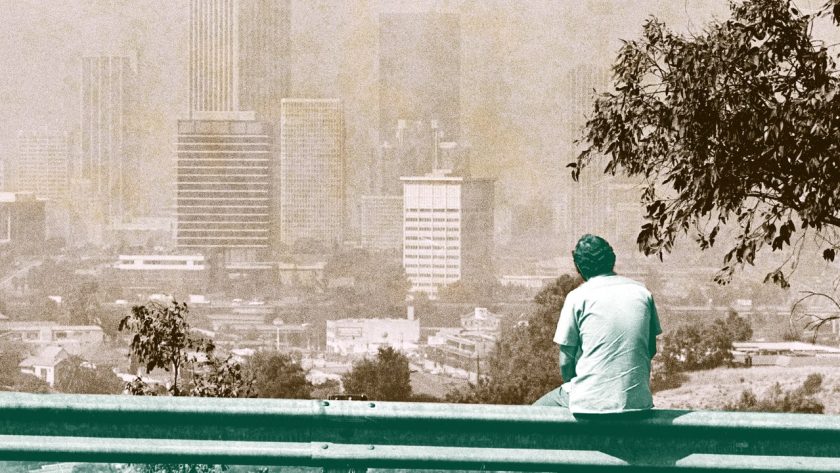The commercial trucks that drive through the Mott Haven neighborhood of the South Bronx may drive miles and miles to deliver produce to grocery stores across the city—but the exhaust sticks around. In fact, thanks in part to the Fresh Direct distribution warehouse tucked into an industrial corner of Mott Haven, it suffers some of the worst air pollution in the United States. The effect that has on residents has earned the neighborhood an unfortunate nickname: Asthma Alley.
According to 2019 reporting from the Guardian, asthma-related hospitalizations from Mott Haven are five times higher than the national average, and 21 times higher than in wealthier New York City neighborhoods. That trend is no anomaly. With 97% Black and Hispanic residents, Mott Haven aligns with other communities of color: Black people are three times as likely to die from asthma than white people.
One outcome of racial disparities is that minority communities sit under smog or in a cloud of particulate matter—both are industrial byproducts—at a much higher rate than white communities. Both of those pollutants are chief causes of asthma. And here’s the double punch: One the whole, those same demographics also contribute less pollution per person in comparison to white consumers.
As the Guardian piece points out, “black Americans are exposed to about 56% more pollution than is caused by their consumption, and Hispanics 63% more. Meanwhile, non-Hispanic whites breathe about 17% less air pollution than they cause.”
Basically, residents in Mott Haven, who may contribute relatively small amounts of pollution through lifestyle, pay an invisible health tax on behalf of wealthier, whiter consumers that those commercial trucks deliver apples and oranges too.
Race can be a hint for exposure, but it’s not the only one. A recent study from the University of Pittsburgh analyzed asthma rates in a very different set of stratified communities than Mott Haven: southwest Pennsylvania fracking towns. The region is permeated by whiter, working class communities tucked away in meandering Appalachian hills.
The study, commissioned by the state, found that those in communities near unconventional natural gas wells—often referred to as hydraulic fracking—had much higher rates of asthma-tied complications than average. According to the study, “If you have asthma, you would have a 4 to 5 times greater chance of having an asthma attack” while living a fracking operation.
In the last two decades, as the oil industry extracted energy from the mammoth Marcellus shale field beneath the state, the chances of living near a fracking well in that corner of the state has skyrocketed. Since 2010, the number of drilling operations in Pennsylvania has gone from several hundred to more than five thousand.
In one way, the communities in southwestern Pennsylvania are paying a similar tax to the residents of Mott Haven. Both are economically stratified and under the shadow of industries that exist to benefit a larger trove of consumers. As Fresh Direct trucks head for New York City’s other borough, the energy dredged up by Pennsylvania fracking wells exports to other parts of the country.



